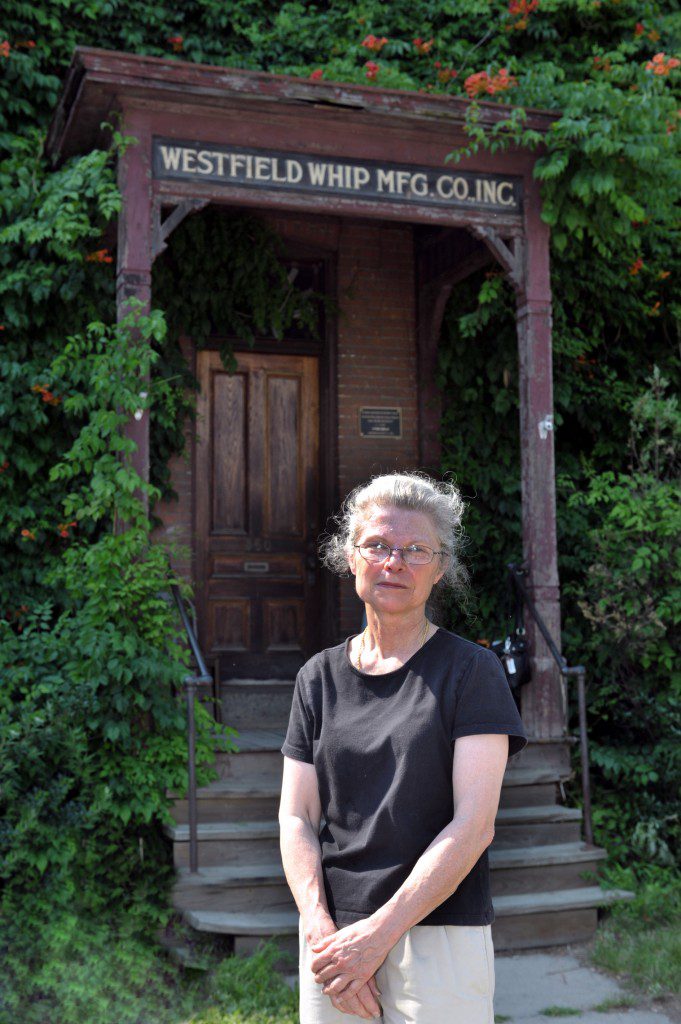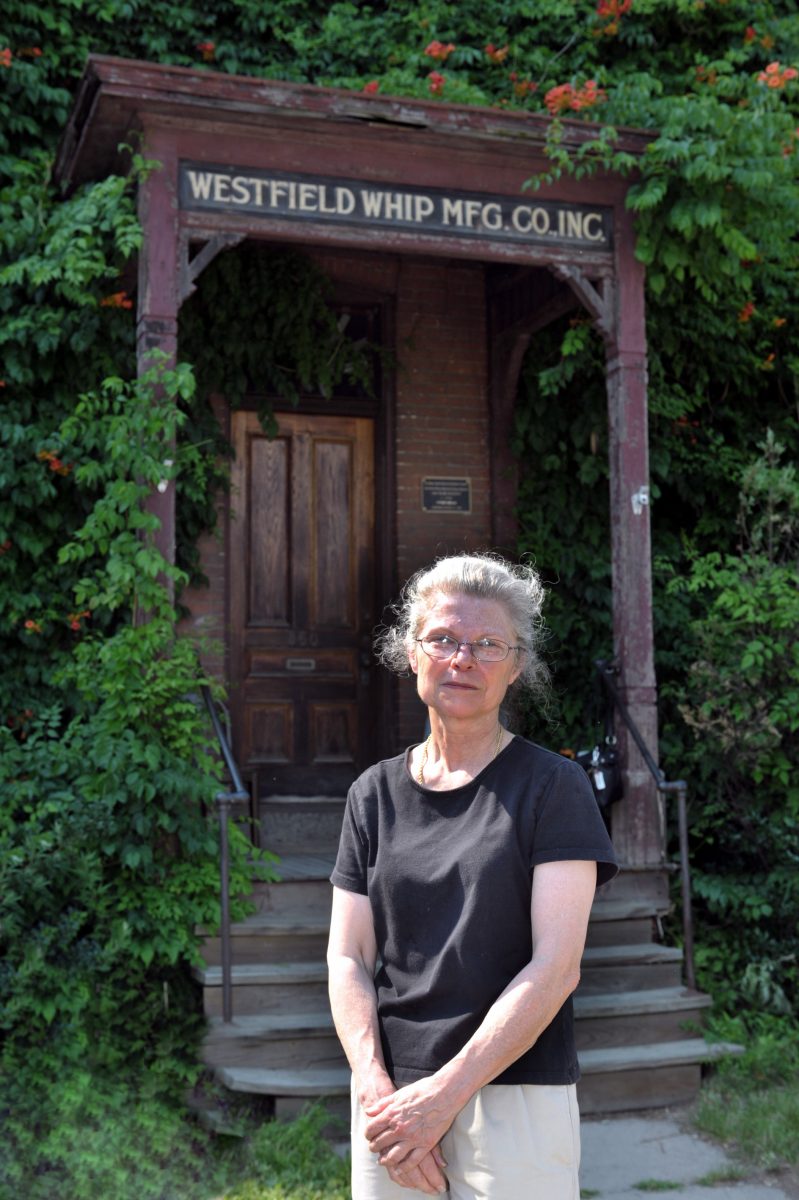WESTFIELD – The Community Preservation Commission voted last night to recommend allocating $754,000 over three years to purchase the development rights from the owners of the East Mountain Country Club.
The CPC voted to use Community Preservation Act funds, raised through a 1 percent surtax on property transactions, to place a conservation restriction agreement on 120 acres of lane directly over the Barnes Aquifer. The agreement now goes to the city’s executive and legislative branches for further review and approval.
Springfield Attorney William J. Murray, who is representing the Perez family, owners of the property, presented a solution to funding the conservation restriction last night after the CPC board balked at funding the agreement in one year.
The Perez family originally requested $1.7 million for the development rights, but amended that compensation to $750,000 as part of negotiations with the CPC.
However, the board said paying the $750,000 in one year would eliminate its funding for other preservation projects and recommended that a multi-year agreement is needed. The Perez family offered to enter into a three-year payment plan, placing a restriction on 40 acres, a third of the property, with each of three annual payments.
The problem with that approach is that it would require the City Council to appropriate funding each year, leaving a possible risk of exposure for both the CPC and owners if the council declined to approve the funding for that fiscal year.
Murray said last night the process “ran into a roadblock at the last meeting. We’re here tonight to resolve” the funding issue.
“The goal for the city is to purchase the development right to protect the aquifer,” Murray said. “The roadblock is funding that (conservation restriction) $750,000, which is impossible for the city to pay at one time.”
Murray offered several avenues for bridging that issue similar to the previous approaches, but then said that under Massachusetts General Law, Chapter 11, the city could acquire the restriction over all 120 acres of the country club “immediately” with the initial $250,000 payment and issue a promissory note or bond to cover the remaining $500,000, financed through future CPA revenue.
“The problem with a bond is that the city would be paying substantial interest,” Murray said. “The solution, which I sent to the Law Department for their review, is that we would hold the note and the board would pay over time from future CPA funds. Basically it would be two pieces of paper, a check and an I.O.U.”
City Planner Jay Vinskey recommended that the CPC seek City Council appropriation of the entire $750,000 “no matter how it is dispersed. You could pay it all, but that would require you to use all available funding.”
CPC Chairman Joe Muto and several other members of the board balked at making a single payment, stripping the accounts needed for other projects that either are presently under consideration or are pending.
“I would rather fund it over time,” Muto said.
Commissioner Vince Olinski said that any vote would be condition on the Law Department review of the funding vehicle.
“Obviously, this can be worked out, but it’s out of our purview. We need to get feedback from the Law Department,” he said.
Vinskey said the vote could include a provision that the Law Department approve the proposed funding mechanism.
Vinskey said that the Board, which is seeking an property survey and appraisal, at the city cost, should include $4,000 along with the conservation restriction appropriation request. That documentation is required by CPA law to define the exact lines of the conservation restriction and the $4,000 would be added to the first annual payment.

Carol Martin, owner of Westfield Whip Mfg. Co. Inc., stands in front of her company located at 360 Elm Street in Westfield. The factory was established in the late 1800’s. (File photo by chief photographer Frederick Gore)
WESTFIELD – The Community Preservation Committee voted last night to fund the exterior refurbishment of an Elm Street building being proposed for a museum displaying the city’s industrial history and historic whip manufacturing.
The committee voted on July 12, 2012 to accept a feasibility study to create a living museum to preserve the city’s historical industrial past, clearing the way for the next step in developing the museum proposal, the request for funding presented in November to refurbish the exterior of the structure constructed in 1880.
The museum concept was initiated to create a living museum at 360 Elm Street, the city’s last active whip manufacturing business, but has since expanded to include the diverse industrial past of Westfield.
The CPC had awarded $72,500 in 2010 to Westfield Historical Industries Preservation Project (WHIPP), Inc. for the feasibility study to develop a business plan and assess the viability of establishing the living museum.
Carol Martin, whose family owns the Westfield Whip Manufacturing Company located at 360 Elm Street, said at the July meeting that WHIPP, Inc. recently merged with Westfield Museum Inc., a group formed to showcase the city’s industrial history, thus expanding the scope of the original living museum concept to include a display area that will be used to other aspects of the city’s industrial past.
Martin said the exterior preservation project is about half of the cost to restore the building. Martin said the original estimate of the exterior renovation has been trimmed by $40,000 and that the museum group, with broad community support, is now seeking $737,454 for the project.
“There are no frills. There is no way to further reduce the cost of that work without violating the historical architectural requirements for this property, which is on the National Registrar of Historic properties,” Martin said. “You are being asked to fund one half of the project, the exterior. We will acquire the other half of the funding for the interior restoration.”
The project is supported by Mayor Daniel M. Knapik, the Greater Westfield Chamber of Commerce, the Western Hampden Historical Society, the Westfield Historical Commission, Westfield State University, as well as advocates of downtown revitalization, because of its impact as the anchor building in the city’s riverfront area.
Community Development Block Grant (CDBG) coordinator Diana McLean said the building restoration project “will be an important showcase for the redevelopment plan for the riverfront area.”
“We need to continue the progress that we’ve made, but that cannot happen without investment in Carol’s building,” McLean said. “Carol’s project will have a ripple effect for that whole area. We need a destination, a reason to bring people downtown.”
Martin said that the project will become a “catalyst to bring other investment” to that area of the city.
City Engineer Mark Cressotti said the city, state and federal governments have funded “major and significant augmentation to the downtown with the bridge project, enhanced parks, road and infrastructure improvements.”
“Now it’s time to put meat on those (infrastructure) bones,” Cressotti said. “The Gaslight project will begin restoration of a downtown neighborhood to support other commercial development, the Columbia Greenway (Rail Trail) is well along and we expect to do the second stage this spring. The rail trail bridge over the Westfield River, the trail connection to Women’s Temperance park will begin next year with federal funding.
“When the Columbia Greenway trail is done, the city will improve the Riverwalk to trail standards and make other significant enhancements to the southern bank of the river, he said. “The whip factory is an anchor facility, so I’m asking you to seriously consider and approve this funding.”
Historical Commission Chairwoman Kitt Milligan said the whip museum will become a showcase for the city, drawing people and school students to a downtown destination.
“A lot of projects come before you which deserve consideration for funding,” Milligan said. “However, the Historical Commission is very passionate to preserve this historic landmark. This is not just whip manufacturing, but Westfield’s industrial past that will be preserved.”
The CPC members supported the project, but also expressed concern that it would substantially impact the CPA funding reserves.
Commissioner Vince Olinski argued that the board should maintain at least $45,000 in the historical preservation reserve account to fund future projects, such as an application of $30,800 request recently submitted the Western Hampden Historical Society to repair the roof of the Dewey House on South Maple Street.
The board voted unanimously to seek City Council appropriation of the $737,470 for the exterior renovation, with $379,995 coming from the historical preservation reserve account and the remaining from the CPA undesignated account.


